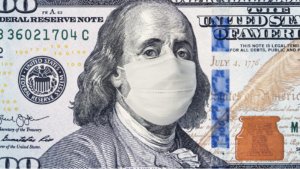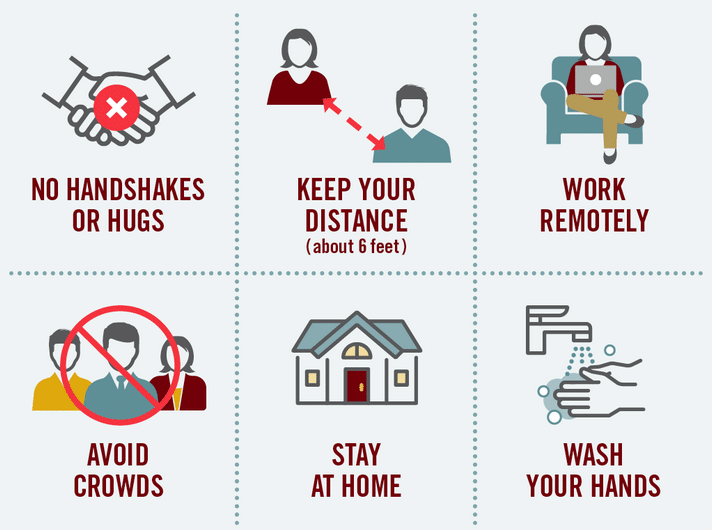The metastasizing nature of this virus has some political leaders continually extending stay-at-home orders; whereas it has others taking baby steps towards reopening their national economies. But, at this rate, most countries could be under some version of “The Great Lockdown” for a year – if not longer.
The United States may have to keep some social distancing measures in place into 2022 until a vaccine becomes widely available, according to a modeling study [by Harvard University’s T.H. Chan School of Public Health] published Tuesday in the journal Science. … Pressure is growing to loosen restrictions in the U.S. and elsewhere to get the economy up and running again.
(The Hill, April 14, 2020)
Except that, as I noted in my very first COVID-19 commentary on February 18, we’ve had a flu vaccine for over 75 years. Yet, according to the CDC, up to 50,000 people still die from the flu each year in the United States alone.
Moreover, this yearly pandemic comes and goes without triggering any shutdowns/lockdowns, social-distancing restrictions, warmongering press conferences, or, perhaps most panicking of all, 24/7 media drumbeats before tolling the bell for each death.
This is why I argued in my commentary on March 31 that we are setting an untenable precedent with the measures we’re deploying to fight this virus.
After all, for these measures to make any sense, we would have to either keep them in place indefinitely or continually redeploy them – vaccine or not. And that would be the case even here in the United States, despite President Trump’s imperious I-have-total-authority-to-reopen tantrums.
Are you prepared to accept some modified version of what you’re experiencing today as your new normal? (FYI: I laid out a four-point plan for coping with this virus at March 20 below.)
On the other hand, here is the instructive way former Obama adviser Rahm Emanuel framed this crisis and the opportunity it presents, reprising the quip he famously made during the 2008 financial crisis:
‘Never allow a crisis to go to waste,’ Emanuel said. ‘Start planning for the future. This has to be the last pandemic that creates an economic depression. We’re going to have more pandemics, but this has to be the last economic depression.’
(The Washington Examiner, March 24, 2020)
In that spirit, political leaders everywhere would be well-advised to champion mass-scale and widespread public works. Because, as long as stay-at-home orders are in effect (and work at home becomes the new normal), construction can go on 24-7.
The point is that lockdowns (i.e., shutdown of all non-essential businesses and stay-at-home orders) are practically begging political leaders to begin fulfilling promises to rebuild crumbling infrastructure. After all, they have been making such promises for decades but have little to show for it.
Yet, here in the United States, Congress seems hell-bent on bailing out investment banks and too-big-to-fail corporations … again. Instead, though, they should earmark hundreds of billions this time for the kinds of “shovel-ready” projects Obama championed after that 2008 financial crisis, but to no avail.
Incidentally, those projects would include repairing or building things like roads, bridges, sewer systems, electric grids, communication networks, transportation hubs, low-income housing, public schools, hospitals, and airports.
In fact, is it just me, or have you noticed that construction companies seem exempt from orders that forced every other type of non-essential business to shutdown…? In any case, such public works would have the twin benefits of
- stimulating economic activity and providing mass employment, thereby staving off another Great Depression; and
- laying foundations not just for the appearance of national rebirth but also for acceptance of new social norms.
 Unfortunately, Congress is still mired in gridlock over a second $2 trillion coronavirus stimulus package. Even worse, like all previous packages, this one seems designed merely to get us from this crisis to the next without any regard for the opportunity for public works at hand.
Unfortunately, Congress is still mired in gridlock over a second $2 trillion coronavirus stimulus package. Even worse, like all previous packages, this one seems designed merely to get us from this crisis to the next without any regard for the opportunity for public works at hand.
Frankly, congressional leaders seem more interested in providing unemployment assistance to all newly jobless Americans than in providing a new job to any of them.
But I know the infrastructure of most countries is no better than America’s. Therefore, here’s to political leaders in your respective countries doing a better job of not allowing this crisis to go to waste. This challenge is especially germane for African leaders whose countries are receiving IMF debt relief to help them survive the economic ravages of COVID-19.
Incidentally, apropos of airports, when Congress turns inevitably to the next Covid-19 relief bill, it should append a law to make wearing masks on planes as mandatory as wearing seat belts in cars. Put another way, allowing passengers to fly without masks is just as hazardous to your health as allowing them to smoke in flight.
Accordingly, to drive home this PSA, “Masks On” signs should begin flashing right alongside “No Smoking” signs the minute anyone boards an airplane.
Related commentaries:
the flu February 18…
four-point plan March 20…
untenable precedent March 31…
coronavirus…


